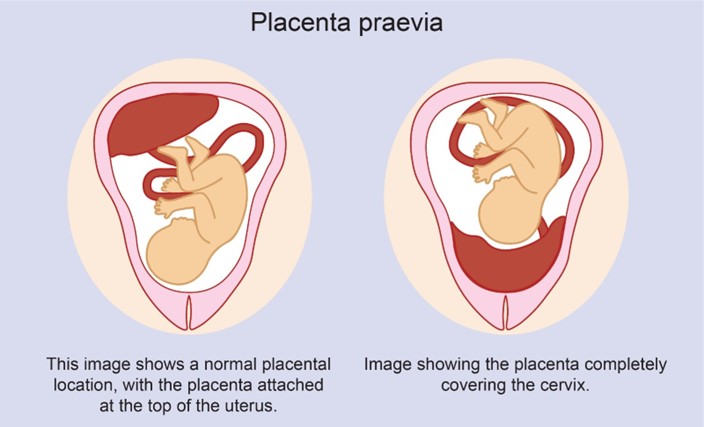Before applying a cord clamp, the nurse assesses the umbilical cord for vessels. The nurse expects to find: Select one:
Two arteries, one vein.
Two veins, one artery.
Two veins, two arteries.
One artery, one vein.
The Correct Answer is A
Choice A Reason: Two arteries, one vein. This is because two arteries and one vein are the normal components of the umbilical cord, which is a structure that connects the fetus to the placenta and provides blood circulation between them. The umbilical cord carries oxygenated blood from the placenta to the fetus through the umbilical vein, and deoxygenated blood from the fetus to the placenta through the umbilical arteries.
Choice B Reason: Two veins, one artery. This is an incorrect answer that indicates an abnormal anatomy of the umbilical cord, which is known as single umbilical artery (SUA). SUA is a condition where there is only one umbilical artery instead of two, which can reduce blood flow and oxygen delivery to the fetus. SUA can be associated with congenital anomalies or growth restriction in some cases.
Choice C Reason: Two veins, two arteries. This is an incorrect answer that indicates an abnormal anatomy of the umbilical cord, which is known as double umbilical vein (DUV). DUV is a condition where there are two umbilical veins instead of one, which can increase blood flow and oxygen delivery to the fetus. DUV can be associated with fetal overgrowth or polycythemia in some cases.
Choice D Reason: One artery, one vein. This is an incorrect answer that indicates an abnormal anatomy of the umbilical cord, which is also known as single umbilical artery (SUA). SUA is a condition where there is only one umbilical artery instead of two, which can reduce blood flow and oxygen delivery to the fetus. SUA can be associated with congenital anomalies or growth restriction in some cases.
Nursing Test Bank
Naxlex Comprehensive Predictor Exams
Related Questions
Correct Answer is D
Explanation
Choice A Reason: Partial placenta previa is a condition where the placenta partially covers the cervix. It usually does not resolve and may cause bleeding and complications during labor and delivery.
Choice B Reason: Complete placenta previa is a condition where the placenta completely covers the cervix. It is a serious condition that requires cesarean delivery and may cause life-threatening hemorrhage.
Choice C Reason: Marginal placenta previa is a condition where the edge of the placenta reaches the margin of the cervix. It may also cause bleeding and complications during labor and delivery.
Choice D Reason: Low-lying placenta previa is a condition where the placenta is near the cervix, but not covering it. It may resolve spontaneously as the uterus grows and the placenta moves upward.

Correct Answer is C
Explanation
Choice A Reason: 3-2-1-0-2. This is an incorrect answer that underestimates the number of pregnancies and overestimates the number of preterm births. The client has had four pregnancies, not three. She has had one preterm birth, not two.
Choice B Reason: 4-1-1-1-3. This is an incorrect answer that overestimates the number of living children. The client has two living children, not three.
Choice C Reason 4-1-1-1-2. This is because the GTPAL method is a way of summarizing a woman's obstetric history using five numbers: G (gravida), T (term births), P (preterm births), A (abortions), and L (living children). Gravida is the number of pregnancies, regardless of outcome. Term births are deliveries after 37 weeks' gestation. Preterm births are deliveries between 20 and 37 weeks' gestation. Abortions are pregnancies that end before 20 weeks' gestation, either spontaneously or electively. Living children are the number of children who are alive at the time of assessment.
Choice D Reason: 4-1-2-0-3. This is an incorrect answer that overestimates the number of preterm births and living children, and underestimates the number of abortions. The client has had one preterm birth, not two. She has had one abortion, not zero. She has two living children, not three.

Whether you are a student looking to ace your exams or a practicing nurse seeking to enhance your expertise , our nursing education contents will empower you with the confidence and competence to make a difference in the lives of patients and become a respected leader in the healthcare field.
Visit Naxlex, invest in your future and unlock endless possibilities with our unparalleled nursing education contents today
Report Wrong Answer on the Current Question
Do you disagree with the answer? If yes, what is your expected answer? Explain.
Kindly be descriptive with the issue you are facing.
